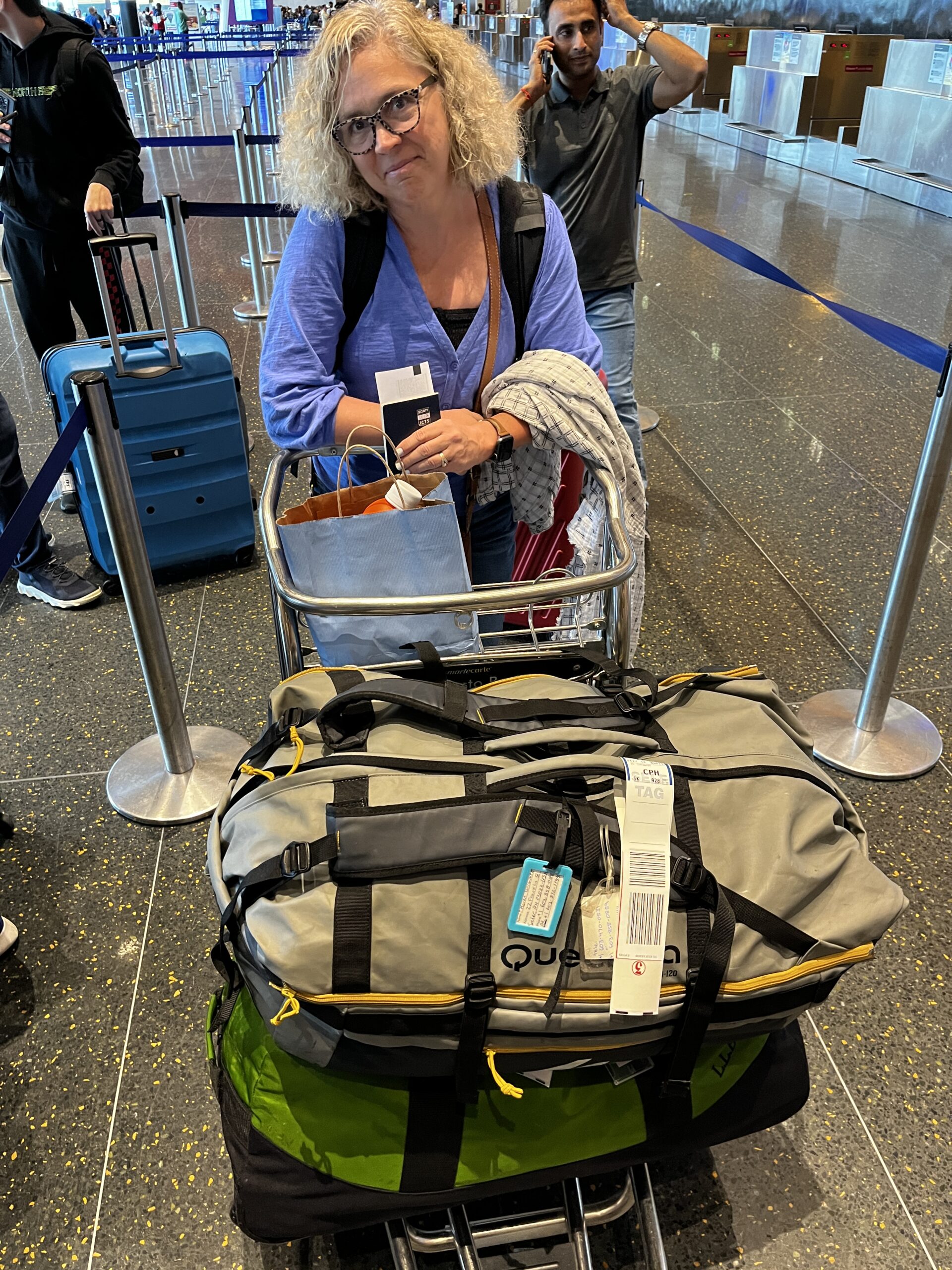I used to be afraid to admit that I was afraid. Maybe it was a gender thing. Boys aren’t supposed to show fear. Or maybe it was a peer pressure thing. Siting around the campfire listening to ghost stories is not the time to show your sensitive side. Or maybe it was a parent thing. Letting a child see your fear only amplifies their fright. But then I heard someone talk about fear management. Alas, there was finally a sign that maybe it was OK to have these feelings. Maybe even not just OK but beneficial.
I know that some people think our choice of adventure sailing is too risky. That is, the people other than the people that think we are on a summer-long vacation of sunbathing and cocktail sipping. It is somewhat true. Not the vacation part, mind you, but the risky part. We live on a 25,000 pound floating platform that is one hole away from succumbing to the forces of gravity trying everyday to pull it under. Unlike the seafarers of yesteryear, Karen and I do know how to swim, but gravity would be more than happy to take us too if we were to go overboard. And while 25,000 pounds sounds big, it’s mere roadkill to the massive freighters whose paths we cross. We also navigate around rocky outcroppings sharp enough to break apart our boat faster than a wrecking ball. And those are the rocks we can see. For the ones lurking underneath the surface, we have to trust our electronics, the often decade-old work of survey crews, and the limited utility of polarized sunglasses.
Each year I get more fearful. I think it is the curse of age. You can back up to the cliff edge for an Instagram-worthy selfie, but after too may years of reading stories of selfie death the fear engulfs you. I used to have absolutely zero fear of flying, having full trust in the pilot, the engineers and the weather. Now, after sixty years of news on plane accidents, you can tell me all day long how, statistically, it is safer than driving a car, but I am still going to wait nervously for the wheels to touch ground again.
Channelling that fear into managed fear sounds good on a PowerPoint slide or in a self help book, but putting it into practice takes, well, a lot of practice. On plenty of nights, I would rather stay in my comfortable berth than replace Karen on watch as Sea Rose heels to windward on an inky black night. Leaving the warmth of the cabin is only a part of the struggle. But I get it. It starts with recognizing the fear before it gets out of control, before it becomes debilitating. When I am clear-headed, I can take the fear and recognize it as an important early warning sign. Becoming extra vigilant – hyperaware, if you will – allows me to see, hear, feel, and touch with more perception. How close is the cliff-edge, is there a wind blowing, what is the makeup of the ground, does it drop straight off or is there a gradual descent? Another management technique Karen and I use is scenario-planning, encompassing what I would call boundary-planning. If we are sailing to windward on a moonless night with no ability to see what is ahead, we think through the possible scenarios of what could go wrong and what we would do about it. Even to the point of abandoning ship. We review where the life-raft is, which ditch bags to grab first, and who takes over control of the radio. The simple act of doing something productive like scenario-planning helps to ease the fear, but more importantly, it makes you more productive should the situation actually go from bad to really bad. We also set up boundaries. If the wind increases another ten knots, we will put another reef in. If we get within three miles of the shore, we will tack away. If in sixty seconds, the ship approaching does not change relative position, we will start incremental thirty degree turns to starboard. Boundaries for kids work well. So do boundaries for fearful sailors. At least that is the theory. We are a work in progress.
In the meantime, we leave the airport in Boston, loaded down with luggage at the weight limit, wondering how this big metal contraption full of flammable liquid can safely ferry all of these people around us for seven hours over the Atlantic Ocean. For now, I am going to skip the somewhat challenging step of scenario planning and just hope and pray for the wheels to touch ground on the other end!



This is an excellent piece. We do similar kinds of things on our long bike cycling adventures. For a long time now I’ve been thinking of writing a post about all the stuff we do & plan for to keep safe while we’re out there on our bikes.